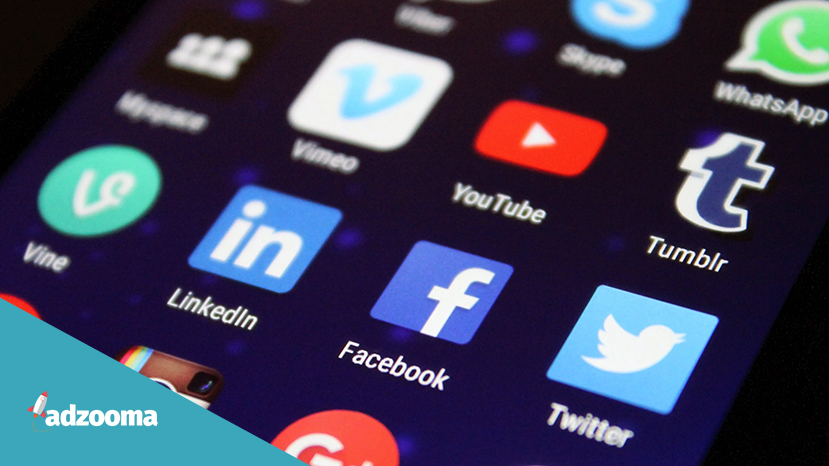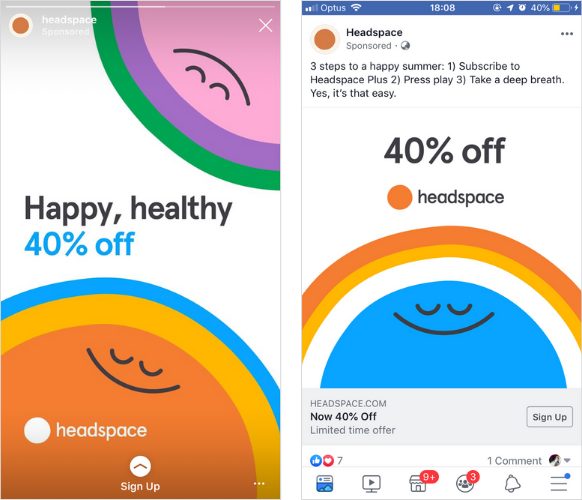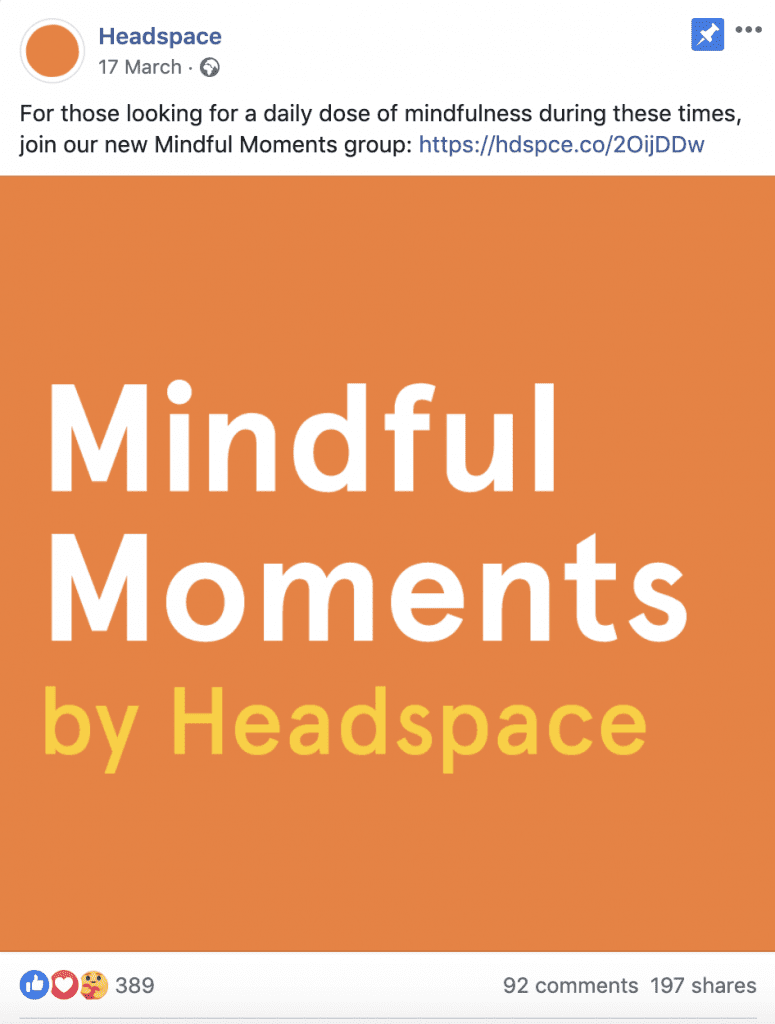As businesses continue to use social media marketing, the challenge to get noticed becomes harder. But is paid social media the best alternative to organic social media or can the two channels work together?
Here’s how to leverage the power of both for your marketing efforts.
What is organic social media?
On the surface, organic social media looks almost identical to paid social. It appears on your news feed in the form of posts but the difference is you don’t pay to promote it. However, organic posts only reach a small percentage of users and it continues to decrease.
What is paid social media?
Paid social is similar to PPC advertising where you pay to promote your social content. For platforms like Facebook Ads, you can tailor your paid campaigns to target specific demographics which isn’t something you can do with organic social. There’s a difference in goals as well – organic content is usually created for engagement and free promotion while paid content is mostly used to generate leads, sales, and brand awareness.
What are the advantages and disadvantages of each?
There are pros and cons to using organic and paid and you should weigh them up before deciding the best channel for your business.
Advantages of organic social media
- It’s free.
- Organic works well if you’ve amassed a large following and don’t have a budget to promote content.
- Because the posts are organic, they don’t (or rather shouldn’t) appear salesy. It’s about engagement and interaction rather than calls to action.
- It helps to build a community, and the posts created are likely to be more interactive compared to the advertisement style of paid social media.
- Hashtags can target a wider audience of people who might not be fans of your page.
Disadvantages of organic social media
- You have very little control over your reach without increasing your audience or boosting content, which comes at a cost.
- While hashtags can help to reach people outside your following, they’re not adopted nearly as much as they are on Twitter and according to a Buzzsumo study of 1 billion (1,000,000,000) posts, content without hashtags perform better than posts using them.
- It’s not guaranteed to be effective and it might take a while.
Advantages of paid social media
- Paid promotion can amplify your reach and to target more of your desired audience.
- It can fit any budget depending on how much you have to work with.
- Audience targeting is a pivotal part of paid social and helps to increase metrics like click-through rate (CTR), cost-per-lead (CPL), and return on ad spend (ROAS).
- Paid social can complement your search marketing efforts, organic or paid, or act as a better alternative if those channels are underperforming
- There’s a lot of flexibility with the types of ads you can use
Disadvantages of paid social media
- Costs might outweigh the benefits if campaigns underperform
- It might not be an effective long-term strategy for your business
- It needs to be monitored regularly, using up resources you might not have for the task
- Paid social traffic isn’t always high quality, leading to high bounce rates and similar pitfalls to paid search if your paid content doesn’t marry up with your landing page copy.
- Too many paid posts could dilute the effectiveness of your content and reach of your brand (paid or organic).
- It’s highly competitive
Making them work together
I’ve spoken about organic and paid social media as separate channels but what if they could work as one strategy?
Organic and paid have the power to complement each other in multiple ways, In fact, one channel won’t work well nearly as well without the other. A good example of a company making organic and paid efforts work well together is Headspace.
Headspace is a mindfulness and meditation service, which it promotes through its app and online content.
On social media, Headspace shares tips and advice for its audience in an effective way that doesn’t fall foul of Facebook’s harsh algorithms. But its paid social content matches up with its organic strategy with clear and unobtrusive CTAs. It’s strong enough that you’ll click it but not so strong that you feel forced to do so. Much like the art of meditation.
Organic social isn’t enough on its own and paid promotion can help extend your reach and get more active users to your site. But without its audience and community aspect, paid social can’t fully thrive. Users will only pay for something if they think it’s worth it and organic offers better social engagement than an ad with a call to buy or download.
It’s about adding value to the user, not hounding them with sales pitches.
Social platforms to consider
Facebook is the most popular social network but it’s not the only one out there and not necessarily the best for what your business offers. Consider the following platforms (with approximate monthly average user figures):
- Monthly average users: 330 million, as of 2019
- Good for: Easy setup for content promotion, paid or organic, less restrictive reach, hashtags can help push content to the right audiences
- Does it offer paid promotion?: Yes, Twitter Ads.
- Monthly average users: 335 million, as of Q4 2019 [PDF]
- Good for: Visual content; perfect platform for demographics interested in art and crafts, design, interior design, gardening, and fashion
- Does it offer paid promotion?: Yes, Pinterest Ads.
- Monthly average users: 430 million, as of 2019
- Good for: Great for crowdsourcing opinions and building a community through subreddits
- Does it offer paid promotion?: Yes, Reddit Advertising.
Snapchat
- Monthly average users: 46 million, as of 2019
- Good for: Similar to Instagram so great for video content and the latest trends, good for targeting younger demographics
- Does it offer paid promotion?: Yes, Snapchat Ads.
- Monthly average users: Over 260 million
- Good for: Professionals and businesses
- Does it offer paid promotion?: Yes, LinkedIn Ads.
Read: 16 Best PPC Alternatives To Google Ads, Facebook Ads, and Microsoft Ads and What Is The Best Social Media For Professionals To Use?
Organic and paid social tools
There are plenty of tools that you can use to help with your organic and paid social media. Platforms and services like Hootsuite and Buffer can help automate and schedule content, saving you a lot of time and effort in the process. In order for paid social media to be effective, you want to know your audience inside and out, so using platforms like Google Analytics on your website can help understand who your target audience is. As a result, it can help make both organic and paid efforts more successful.
There are certainly different purposes for organic social media and paid social media. However, what’s similar is that they can’t work without one another. So it’s important that you continue to use both for your business.
And if you plan to use Facebook and its ad platform but don’t have the resources to manage every fine detail, you should try Adzooma. The platform’s Opportunity Engine uses artificial intelligence (AI) to find the best suggestions for your campaigns to boost sales and make Facebook management a doddle.
Conclusion
Before you jump into creating a hybrid social media strategy and maxing out your budget, consider the following questions:
- What do I want to achieve on social?
- What am I offering?
- What is my budget?
- What is my target audience?
Knowing the answers to these questions will help you shape your strategy and find the right balance between paid and organic. If you plan to experiment, try it with organic social and low-cost methods first, find what works and what doesn’t and then move onto paid promotion.






